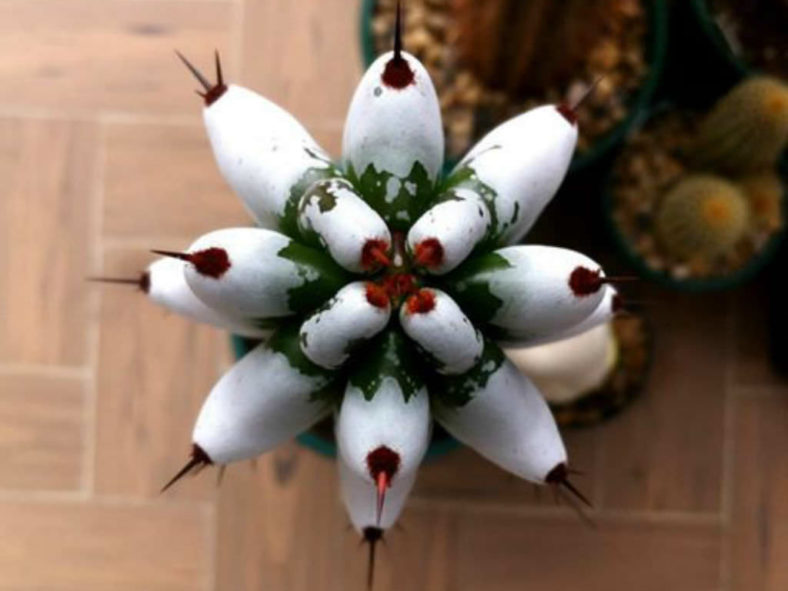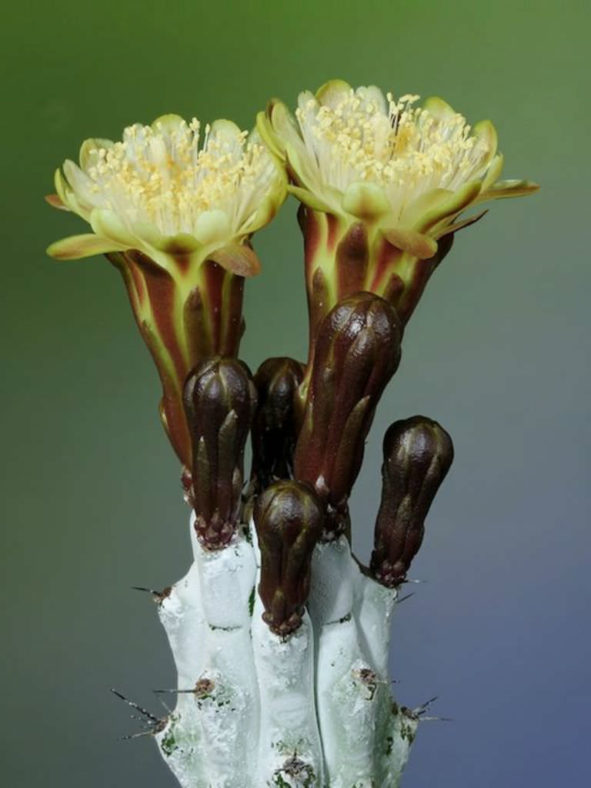Scientific Name
Stenocereus beneckei (Ehrenb.) A. Berger & Buxb.
Synonym(s)
Cereus beneckei, Hertrichocereus beneckei, Lemaireocereus beneckei, Piptanthocereus beneckei, Rathbunia beneckei
Scientific Classification
Family: Cactaceae
Subfamily: Cactoideae
Tribe: Pachycereeae
Genus: Stenocereus
Etymology
The specific epithet "beneckei" (pronounced "bee-NEK-ee-eye") honors the Berlin-born trader Stephan (Etienne) Benecke (1808-1879), who emigrated to Mexico.
Origin
Stenocereus beneckei is native to central Mexico. It grows on the sunniest rocky slopes.
Description
Stenocereus beneckei is a shrubby cactus with erect to decumbent stems that have 5 to 9 strongly tuberculate ribs lined with areoles that usually bear 1 to 3 spines. The stems are bluish-green to bronze-green and covered with a white, waxy coating. They can grow up to 6.5 feet (2 m) long and 3 inches (7.5 cm) in diameter. The spines are brown or black at first, then become grey with reddish tips as they mature, and can measure up to 1.6 inches (4 cm) in length.
The night-blooming flowers are greyish-white or cream-colored, appear in winter, and stay open only 24 hours. They are narrowly funnel-shaped and can reach a length of 2 inches (5 cm). The fruits are grayish-brown or reddish-brown, with clusters of spines that can measure up to 0.8 inches (2 cm) in length. They can grow up to 2 inches (5 cm) long and 1.2 inches (3 cm) in diameter.

Hardiness
USDA hardiness zones 9b to 11b: from 25°F (-3.9°C) to 50°F (10°C).
How to Grow and Care
Like most cacti, Cereus are fairly low-maintenance and hardy. Ensure they receive sufficient water without becoming waterlogged, especially during the summer, and fertilize them for optimal results. If the roots have become black or overly soft, the cactus could be experiencing root rot. Cut away the affected parts and replant them. Most gardeners interested in cacti should be able to cultivate these without much problem.
If your Cereus outgrows its container, it may become necessary to repot it. If so, ensure the soil is dry and remove the pot. Knock away the old soil, prune away any rotted or dead roots, and then replace it in a new pot. Backfill it with fresh soil. Do not overwater cacti planted in new pots, as this can lead to root rot. It should be left dry for about a week and then watered lightly.
These cacti propagate quite easily from cuttings. Sever a branch and replant in moist, well-drained soil.
See more at How to Grow and Care for Cereus.
Forms
Links
- Back to genus Stenocereus
- Succupedia: Browse succulents by Scientific Name, Common Name, Genus, Family, USDA Hardiness Zone, Origin, or cacti by Genus
Photo Gallery
Click on a photo to see a larger version.

